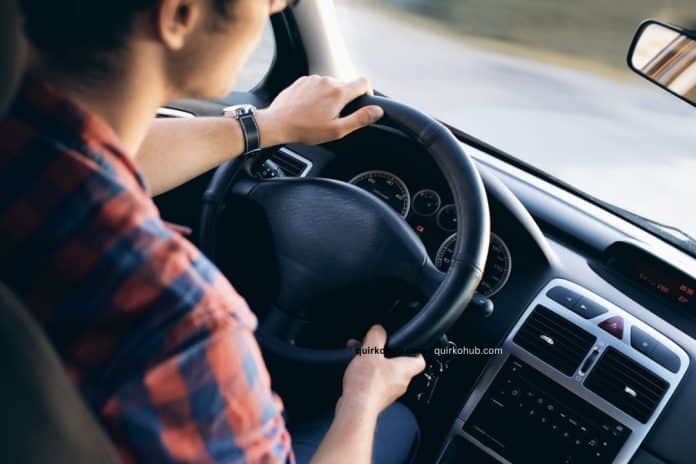Getting your first driver’s license is a big deal. It brings freedom, responsibility, and a whole new level of independence. But before you can enjoy the open road, you need to go through several important steps. Whether you’re in Texas, California, or anywhere else in the United States, getting ready for that first license means doing more than just passing a test. It’s about learning to drive safely, responsibly, and confidently.
In this blog, we will share how young drivers can prepare for their first license and what steps to take along the way.
Understand the Licensing Requirements in Your State
Every state has its own process for getting a license, so it’s important to know what your state’s rules are. Some states require a learner’s permit before you can get a full license, while others have specific age limits and testing procedures.
For example, in Texas, teens must complete a driver’s education course, hold a learner’s permit for at least six months, and pass both a written and driving test. You should look up your state’s Department of Motor Vehicles (DMV) website to get accurate, updated information.
Meet Age and Eligibility Requirements
Each state has a minimum age for getting a learner’s permit and then a license. In Texas, for instance, young drivers must be at least 15 to apply for a learner’s permit. But getting that permit also depends on other conditions. Teens need to enroll in an approved driver’s education program and complete a specific number of hours in both classroom and behind-the-wheel instruction.
Once they have their learner’s permit, Texas teens must hold it for six months without any violations to be eligible for a provisional license. This means practicing regularly with a licensed adult and avoiding traffic violations or accidents. This rule is part of the larger Texas driver’s license eligibility process. Failing to meet any of these conditions could delay getting a license. That’s why it’s important to follow every step and ask questions if you’re unsure about anything.
Sign Up for a Driver’s Education Course
Driver’s education is more than just a classroom requirement—it teaches the skills and habits you’ll use for a lifetime. These programs usually include a mix of classroom learning and behind-the-wheel training. In class, students learn about road signs, traffic laws, and how to handle different driving situations like bad weather or heavy traffic. This knowledge helps prepare them for both the written test and real-life driving.
Behind the wheel, students work with a certified instructor who helps them build confidence and develop safe habits. They’ll learn how to make proper turns, use mirrors, change lanes, and respond to emergency situations. Taking this course seriously can make a big difference in how well you drive and how prepared you feel for the road test. It also shows parents and instructors that you’re taking this responsibility seriously.
Practice Driving with a Trusted Adult
Getting enough practice is one of the most important parts of learning to drive. After receiving your learner’s permit, you’ll need to spend time on the road with a responsible adult—usually a parent or guardian—who can coach you while you drive. Start with quiet neighborhoods before moving to more complex roads like highways and busy intersections. Practicing in different conditions helps build skills and confidence.
Make sure to focus on specific tasks during each drive. One day, you might work on parking; another day, you might focus on merging or lane changes. Try driving during both day and night so you can get used to different visibility levels. Always stay calm and ask questions when you’re unsure. The more situations you experience with a supportive adult, the more confident you’ll be during your driving test.
Learn the Rules of the Road
Knowing the rules of the road is key to passing your written exam and staying safe while driving. It’s not just about memorizing signs or signals—you need to understand how to behave in different traffic situations. Study the driver’s handbook for your state and make flashcards or use apps to help you review important topics. Topics like right-of-way, speed limits, and safe following distances come up often on the test.
You should also learn what to do in less common situations, like when school buses stop or how to handle a four-way stop. Ask your instructor or parent to quiz you. Pay attention to road signs while riding as a passenger—it helps you recognize them quickly when you’re the one behind the wheel. The more familiar you are with the rules, the more smoothly your test—and your driving—will go.
Take the Written and Vision Tests Seriously
Before getting your learner’s permit or license, you’ll need to pass a written test and a vision exam. The written test checks your understanding of traffic laws, signs, and safe driving practices. Many DMV websites offer sample tests that you can take as practice. Take them multiple times so you know what to expect and where you might need to study more. Don’t rush the process—make sure you feel ready.
The vision test is just as important. You need to prove that you can see well enough to drive safely. If you wear glasses or contacts, bring them to your test. If you don’t pass the vision test, the DMV may ask for a note from your eye doctor. Both tests are designed to keep you and others safe, so prepare with care and take them seriously.
In conclusion, getting your first license is an exciting step toward independence, but it also comes with real responsibilities. Taking the time to learn, practice, and prepare sets you up for long-term success on the road. Focus on each step—studying the rules, completing your driving hours, and learning from every experience. Driving is a privilege that comes with trust and maturity. By being mindful, responsible, and always open to learning, young drivers can build habits that keep them—and others—safe for years to come.
